#what’s the cutoff between types of dragon
Explore tagged Tumblr posts
Text
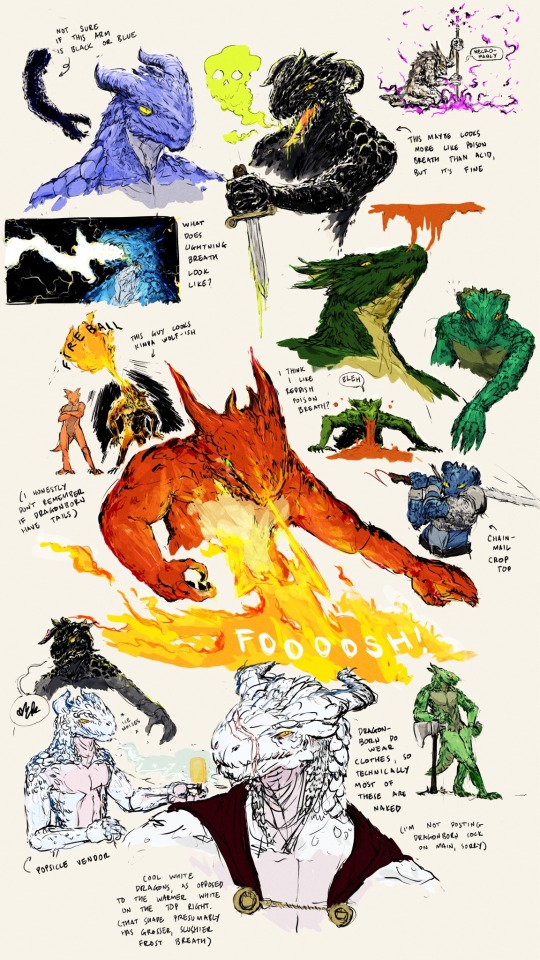
chromatic dragonborn since I had so much fun with them yesterday
#what’s the cutoff between types of dragon#color-wise I mean#like I can have a blue dragon who gets real close to green#or a green who’s maybe a tarnished copper#is it more about the breath weapon than the actual scale color?#is there actual lore here?? I don’t know a ton about dragonborn lore tbqh#I do like how the BG3 character creation blurb is weirdly defensive about their origins tho#‘they’re definitely not actually related to dragons. stop asking about it.’#anyway#digital illustration#sketches#dragonborn#hashtag dragonborn#illustration
16 notes
·
View notes
Text
Alright, I finally remembered how to use statistics well enough to investigate this! Literally no one asked for this but I'm bored and need to practice using R and putting statistics into semi-understandable terms, so I'm sort of explaining it like I'm teaching it lol.
Does preferring cats or dogs affect whether you prefer Goku or Vegeta?
First, we need to set up our hypotheses for the answer. This is necessary to be be able to run most statistics tests, and an important part of the scientific method. We'll need a null hypothesis and an alternative hypothesis. In general, the null hypothesis is that there is no link between the variables you're looking at. Our two variables here are whether a person prefers cats or dogs, and whether a person prefers Goku or Vegeta. So in this case, our null hypothesis would be that preferring cats or dogs doesn't affect whether you prefer Goku or Vegeta. In contrast, the alternative hypothesis is that there is some sort of relationship between the variables, although you often can't specify what that relationship is, just that it exists. It's called the alternative hypothesis because it's the alternative to the null hypothesis. In this case, our alternative hypothesis is that whether you prefer cats or dogs somehow affects whether you prefer Goku or Vegeta.
The null hypothesis is what we assume to be true by default, but if we can collect enough data that doesn't match what we'd expect if the null hypothesis were true, we can reject the null hypothesis. This still doesn't technically allow us to confirm the alternative hypothesis, but it does tell us that something interesting is going on. If we don't find data that is noticeably different from what we'd expect to see if the null hypothesis were true, we fail to reject the null hypothesis instead.
Now, to get back to answering our question, we need data, which is helpfully already collected by this poll. To start, I calculated the actual numbers from the poll by multiplying the percentages by the total number of votes. Then I put them into a table.

Next, I plotted the data to get an idea of what it actually looks like.

This is a mosaic plot, which represents the results of the poll. The width of the boxes represents the proportion of votes for each category. So, the most people liked Vegeta and were cat people, and the fewest liked Goku and were dog people.
Looking at this plot, it suggests that there's no relationship between our two variables, because about a third of people who liked dogs preferred Goku, and a third of the people who liked dogs preferred Vegeta. If there were any correlation between, for example, liking dogs and preferring Goku, we would expect to see a higher proportion of people who liked dogs picking Goku.
However, I still want to run an actual statistical test, even though this visual almost certainly means that there was no link between being a cat or dog person and favorite Dragon Ball character. This is for completionism's sake lol.
This post is already solely for an audience of myself, so I won't go into how to choose the right test for different types of data, and I'll skip to saying the right test to run for this is a Chi-squared contingency test. This test gives a p-value as a result. p-values are often complicated to explain, but the most basic explanation is that they represent the probability that the current results occurred if you assume the null hypothesis is true. It ranges between 1 and 0. A 1 means that the results are exactly what you'd expect if the null hypothesis was true. A 0 means that you would not expect to see these results if the null hypothesis is true. Anything 0.05 and below is considered to be statistically significant. This represents a 5% probability that the null hypothesis is true and these results have occurred by random chance. This cutoff is honestly somewhat arbitrary but at this point it's tradition. Now to run the test on the actual data.

Here's the output of running the Chi-squared test. I don't know why tumblr blurred the picture, but the important thing about this result is that the p-value is 1. I've actually never seen a 1 before lol, usually it will be more like 0.97 or something. This means these results are exactly what you'd expect if the null hypothesis, that being a cat or dog person doesn't affect whether you prefer Goku or Vegeta, was true.
I think this actually makes sense, since they both have some cat-coded traits and some dog-coded traits.
TL;DR Whether you are a cat or dog person does not affect whether you prefer Goku or Vegeta, according to this poll
I have no idea whether or not I was coherent but I had fun. If anyone wants to ask me stats questions or find/make new polls for me to do this to, I would be excited lol
75 notes
·
View notes
Text
7x06 - The Knife In the Heart Scene
I know I already mostly discussed this episode pretty in this post, but this just hit me while rewatching that boat scene.
youtube
It's really no coincidence that Davos is the one undressing Jon in this scene and "baring" Jon to Dany in the process. And it's not just because Davos is his only man/advisor on the boat. Dany's people could have done that if push came to shove. And sure enough, we see a couple of them step in to help hoist Jon up once Davos is done opening up his armor.
Considering back in 7x03, when Davos spoke on behalf of Jon to Dany, he says "He risked his life for his people. He took a knife in the heart for his people. He gave his own--" We know that Dany clocked that cutoff as did Tyrion because Dany mentions (and is purposely bringing it back to the audience's attention) it to Tyrion and neither of them are sure if Davos was being literal or not. Dany is especially interested because she has now met someone who rivals her in the whole belief factor, which Davos smartly makes sure to mention after her whole big speech about herself.
This whole episode was a setup to the decision Jon would need to make. And sure enough, we see him do it. Not only does he have the obvious framing of the "but" in his dialogue and the deep breath and 'crap' look once Dany leaves the room but also the somewhat subtle shots of the scene before it:
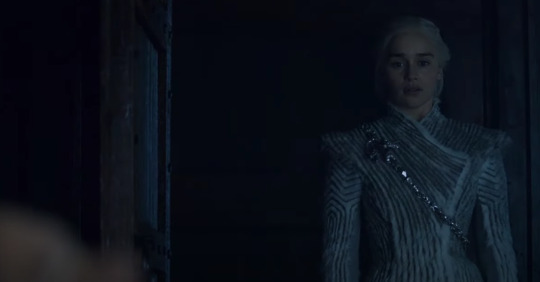
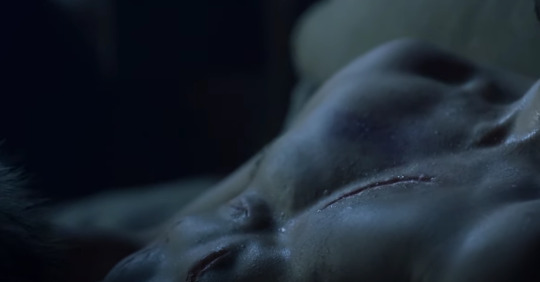
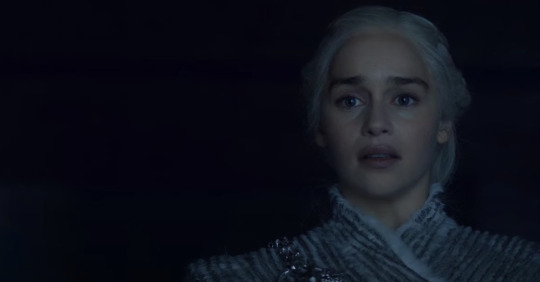
Not only does this confirm for Dany that what Davos said was true, but also why he said it. Which is why we are shown her reaction. Not just because Jon took a knife in the heart and she's concerned for him, but also because he literally took a knife to the heart for his people. And now she knows why his people follow him (which is why I'm willing to bet that she also agreed to fight the NK with him before he bent the knee); taking a knife to the heart is not something she has done for her people, despite all of her magic and making "impossible things happen". Belief/Faith was a tool she used to gain loyal followers and it was also something that contributed to her downfall, her belief in her destiny.
So here is this guy who you're starting to be attracted to, someone you might even be starting to have feelings for (because let's face it, Jon going North of the Wall to get the undead soldier to show Cersei for her is equivalent to Drogo making his speech promising to take on KL for her back in season 1; they even show this type of reaction again in 7x07 at the dragonpit when Jon declares his loyalty to her), a guy who you keep bumping heads with because he wants to be an ally but won't bend the knee or give up his crown to you, and now you see he has literally been stabbed in the heart (and possibly died? you don't know for certain at this point but if he died then somehow he came back, meaning more magic) and he did it for his people. You now know that this man will never bend the knee to you (not knowing that Jon will later on) and the best you can hope for right now is to make him/the North an ally and go to save your people (his people), especially since you now have the undead soldier to show to Cersei to get her to possibly agree to a truce. Because you're never getting around that loyalty his people have to him (unless you try to win their hearts another way, but even if it's impossible, hey you always have dragons aka 8x01 dragons flying overhead scene and the ensuing terror), you're furious and heartbroken because one of your children was killed by the NK and you want revenge, and maybe if this guy sees you agreeing to fight his war with him, maybe he'll change his mind and decide that she's someone he should bend the knee to eventually. Just like Sansa was the "key to the North", so was Jon. For Dany. (another parallel between Jon and Sansa btw)
So they purposely wrote/shot this scene to show the audience that Jon is about to take a knife in the heart for his people, again. (while also showing us what seeing this wound means for Dany and her reactions, now and later) By bending the knee and giving the North to her, he is literally choosing the right thing aka saving people again. This time the North may not be happy but they won't do what the Night's watch group did (especially thanks to Sansa being there to smooth things over as she kept doing in season 7). But the post of King in the North meant a lot to Jon, not because of a crown, but because they literally chose him, a bastard, to be King. They all placed their trust in him, to lead them. Jon has always wanted to be a Stark and this was the next best thing, especially following in Robb's footsteps. But he knows he needs to do whatever it takes to save them from what's coming.
Sure enough, we get Jon bending the knee but also framing it in the obvious way that he doesn't really mean it's because he feels she's right for the job. "I would bend the knee but..." and "They'll see you for what you are."
And of course, we get this framing of Jon's coverage as well:
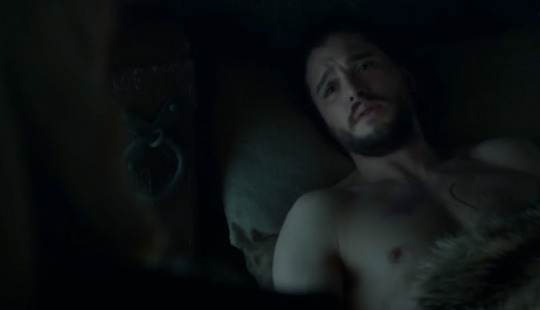
"I'm sorry. I'm so sorry." - he isn't just apologizing for Viserion (after all, it wasn't him that sent them on that mission in the first place), he's also apologizing for what he's about to do
He does exactly what he learned from Sansa in 6x04: he grabs Dany's hand to get her to listen and make a connection:
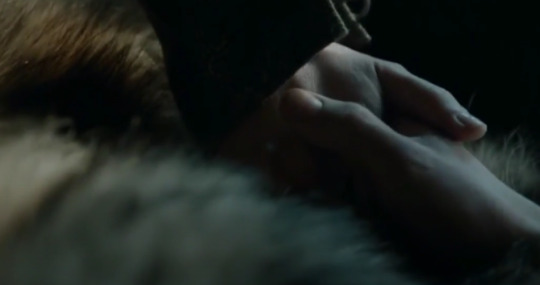
"I wish I could take it back." - he wishes he didn't have to do this
"I wish we had never gone." - this isn't just about the mission, it's also about his trip to Dragonstone in the first place
Dany removes her hand from his and says she doesn't, that if she hadn't gone, she wouldn't have seen. And you have to see to know, and now she knows. (this isn't just about the undead; she now knows Davos' story about Jon is true as well, something she may not have found out had this whole thing not happened; now she knows what she's dealing with)
Then she mentions the dragons and how they're the only children she will ever have. "Do you understand?" Notice how Dany asks him this, there's a bit of restrained anger underneath there and it's in the same tone (though quieter) from when she made that speech to Jon in 7x03. (the anger is there not just because of what the NK did, Viserion's loss, but also something else, which is an odd timing for this to come through, right?) To me, I think she's still asserting herself here as thee ruler and Jon knows it, too.
Sure enough we get Jon's reaction:
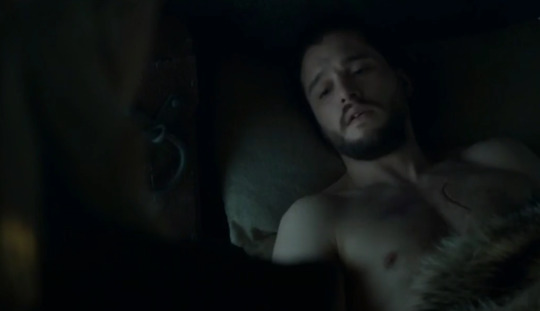
He nods and closes his mouth, looking somewhat sad. She still doesn't get it. He knows what he has to do. He doesn't want to but he has to. He's now seen the dragons in action, he almost died himself, he saw Benjen sacrifice himself to save Jon (not a coincidence either btw - reminding him what Beric said this episode of being the shield that guards the realms of men) - he has to do it.
Then he makes eye contact with her again.
And then we get Dany's assertion that they are going to destroy the NK and his army together. She then softens it with "You have my word." At this point, Jon has seen her impulsivity (is that a word?), he knows KL/Cersei is still a priority for her (since she made this promise, why do they still need to go meet with Cersei then? Why not light up the undead soldier and go immediately to Winterfell from this point? Dany at this time didn't think Cersei would march her army up North to help so why... we all know why but so does Jon).
We see Jon swallow and say "Thank you, Dany." (he doesn't really believe her)
And sure enough, we switch from Dany's coverage to this shot:
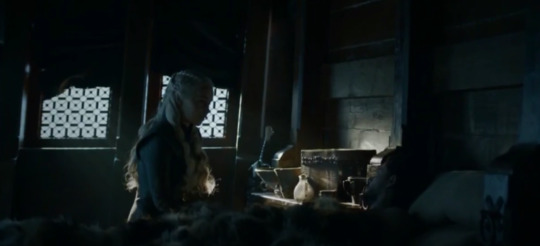
If this were showing a true romance in the making, or even just a connection between two people or a trust/bond forming, why switch out of the closeups? Especially when the dialogue is indicating it's a connection moment taking place? He called her Dany and here she responded on who last called her that nickname. We don't get to see Jon's reaction at all except from a distance. We do see the camera subtly panning in though, to tell the audience to pay attention, because this moment is important. (she's talking about Viserys, which is interesting considering the dragon named after him just died, but ultimately she becomes most like Viserys compared to Rhaegar in the end, out of the two brothers)
It isn't until she says "Not the kind of company you want to keep" that we then go back to Jon's close up where he says "Alright." He then takes a momentary pause before saying "Not Dany." He's giving the slightest of smiles here and then he takes another pause. And his whole expression shifts:
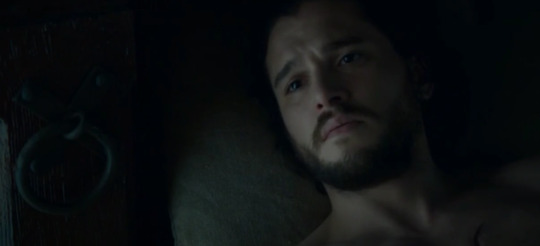
"How about my queen?" (notice the manacle next to him during this whole scene btw -> this show made choices)
Then the "See You For What You Are" music cue starts playing in the background as we're shown Dany's initial reaction. (she's unsure of just what he's saying)
"I'd, um, bend the knee, but..." Jon is not making eye contact with her at all during this moment. And notice how Dany doesn't react until he clarifies about bending the knee -> Dany didn't care about a throne or crown or being called queen, she only cared about ruling over people and having them submit to her just like a true conqueror/dragon (they're showing us this here in this moment)
Dany is in shock and doesn't know if she can trust it, not because of anything nefarious, but because he had resisted so long and she altered her strategy, not expecting that it would come this easily. Sure enough, "But what about those who swore allegiance to you?"
This time, Jon has no problem making eye contact with her: "They'll come to see you for what you are."
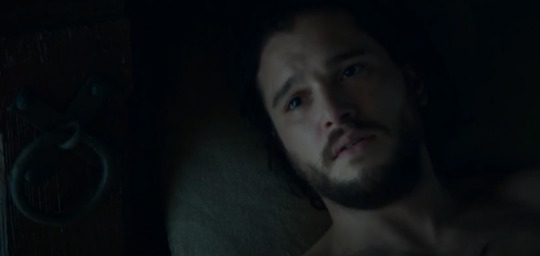
Dany gets a little emotional and then puts her hand back in Jon's. And Jon sees this. (Dany is doing the same thing he did just a few moments ago when he took her hand but for different reasons)
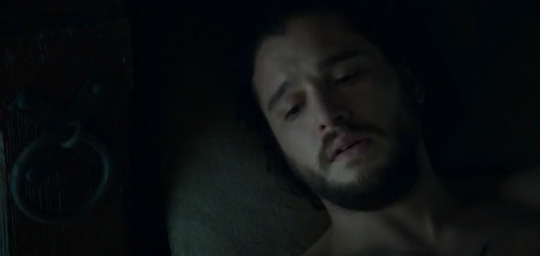
He then tightens/closes his grip. Dany sees this, too. She then says "I hope I deserve it." (a rare honest moment we see with Dany btw)
And we get Jon's expression which clearly shows that he knows she doesn't but says "You do." Dany is happy and dare I say grateful. Then we see her attempt to pull her hand back but Jon holds onto it. Her eyes then slowly lift to look at Jon who is intently fixed on her. She then slowly pulls her hand away. Jon sees this and appears slightly worried and without looking at him, she tells him he should get some rest. Then she looks back at him and he nods, looks at her for a moment more, and then shuts his eyes.
Dany seems unsure what to think and eventually leaves. When we hear her leave, Jon slowly opens his eyes and looks in the direction she went. The camera goes back to the wide shot and pans back out, showing us Jon thinking, then looking up at the ceiling, and taking a deep breath (aka his breath he takes when he's weighed down by something).
Like many people have pointed out already, and that we all already knew, this is Jon's wildling arc all over again. He betrayed the North (aka the Night's watch) to save the Northern people (the wildlings) from the NK. He was branded a traitor in both scenarios but this time he had Sansa who not only held his forces for him for the upcoming battle and acted as regent, but who made sure to keep him in a good light even when some of the North questioned him and his motives.
But bending the knee, giving away not only what he was entrusted with but also what he held near and dear to his heart (the North trusting him and making him their leader), in order to save them from the NK, he took a knife in the heart again. And that is why the show made sure to not only let us see Dany's reaction to the wound being bared, but also to keep it in the audience's eyesight while this submission (because that's exactly what it is, submission) scene took place.
Jon did what he had to do to save the North. It was never about love for Dany for him or feelings. It was never about because he thought she would make a good queen or that she deserved it due to her birthright. He didn't believe in her like Missandei, Grey Worm, and all the rest did. He did what he had to do to ensure they would survive winter. That's all.
This show may have screwed up in the end but they were absolutely brilliant at times with every little underhanded piece they threw in there to tell the audience the story. Unfortunately, GA doesn't tend to look that deeply. So naturally, they thought this was a burgeoning romance for the ages. When it was nothing even close to a romance being hinted at.
#dark!dany#dark!dany meta#got#game of thrones#gotposts#dark!daenerys#jonsa parallels#only using that tag because there is yet another jonsa parallel in here#that i haven't seen mentioned before in my travels on the tag#so just in case#metaposts#pol!jonposts#antijonerysposts
32 notes
·
View notes
Text
3 Tips To Speed Up Your Writing
Speed up Like A Pro

There is positively no denying that Article writing can be a terrible and depleting task. Pulitzer Prize-winning American author and short story essayist, Anne Tyler, once stated, "On the off chance that I held up till I wanted to compose, I'd never compose by any means."
On the off chance that expert writers and journalists need to compel themselves to compose, one can envision the sheer self control required for a normal individual to plunk down and put pen to paper... or on the other hand fingers to console just to create a bit of substance.
Regardless of whether you love writing, there will be times when you're only not into it. What do you do at that point? You may even now have cutoff times to meet or your blog will require its booked post. You don't have a decision however to compose... what's more, it can appear to be painful.
The most ideal approach to get around this issue will be to turn into an increasingly beneficial author. That basically implies that you'll have the option to compose more in less time. For instance, on the off chance that it takes you an hour to compose your week by week blog entry, by turning into a quicker author, you may have the option to compose two posts in that equivalent hour.
You'll at that point have content for about fourteen days and you won't have to stress and fret so regularly over composition. Being quicker additionally implies that your work gets finished sooner. In case you're an independent author, you'll have the option to take on more work and twofold your profit.
You'll have all the more leisure time to would what you like to. There are numerous advantages that can be collected just by writing quickly. This article will give you three hints that will make you a quicker essayist, on the off chance that you tail them.
Figure out how To Type
This may appear as though a fundamental tip yet most moderate journalists are likewise moderate typists. Your composing speed has an immediate relationship with how quick you can produce content. Regardless of whether you realize how to type, you should attempt to turn into a quicker typist.
The quicker you are, the better. You'll have the option to thoroughly consider your fingers. There will be no slack between your musings and the words showing up before the screen. The best scholars generally type quick.
You can figure out how to type online from destinations like typingclub.com. There are numerous such locales. Discover one that you like and begin.
On the off chance that figuring out how to type appears to be an over the top Herculean errand to you, there is consistently the alternative of correspondence programming like Dragon Naturally Speaking. You'll have the option to direct your article or whatever content you need composed.
Another choice is stand up your substance and do a voice recording of it. You would then be able to send the sound record to an interpretation administration where it will all be composed for you.
Whatever alternative you decide to go with, the main thing is that you attempt to quicken the speed at which your considerations become content.
Utilize A Countdown Timer
Another significant instrument you ought to utilize is a commencement clock to speed up. You can utilize an online clock at Online-stopwatch.com/commencement clock.
The objective here is to consistently attempt to accomplish more in less time. For instance, on the off chance that you take 15 minutes to compose a 500 word article, you should mean to do it in a short time or even 12 minutes. Utilize a commencement clock at whatever point you compose and consistently attempt to beat your own best.
After some time you will turn out to be a lot quicker and you'll additionally be progressively engaged.
Make some Fixed Memories
Writing is a propensity that must be developed after some time. In a perfect world, you ought to make some fixed memories to compose. A few people do well promptly in the first part of the prior day any other individual has stirred... while others function admirably into the night while the world rests.
It doesn't make a difference what direction you go however what you'll have to do is discover what works for you. Cv Writing ought to nearly appear to be a custom. A similar time, at a similar spot and for a similar length.
Intend to make it mechanical and unsurprising. This is perfect to making your brain and body familiar with writing. When you have become accustomed to the custom, the second you sit at your work area at the particular time, your brain will be prepared to compose. You'll be in the 'zone'... furthermore, will photo your contemplations and put them in writing or on your promise processor rapidly and without any problem.
By following these three hints, you'll see your writing speed improve and not exclusively will you compose quicker, yet you'll additionally compose better. The dread and delay you envision at the idea of writing will disseminate. It may not leave completely... be that as it may, you'll not severely dislike writing as much as in the past, since you realize that you'll have the option to do it quick.
0 notes
Text
being mean to Roche is Iorveth’s thing!!
right, so for temperature-dependent sex determination, the temp of the egg is what matters. there’s a critical period midway through incubation, about 1-2 weeks long, where gonad development becomes fixed, called the TSP (thermosensitive period). after this period, it doesn’t matter what temperature the egg is, the phenotypic sex is unaffected. (phenotypic sex being: sex defined by which reproductive organs are present. notably, some people say for a species to be truly considered to have temperature-dependent sex determination, they need to not have genotypic sex. that is, no X, no Y, no Z or W, no sex chromosomes period. this isn’t really relevant I just think it’s kind of fascinating.)
during the TSP, consistent temperature above or below certain thresholds will definitely produce either a male or female hatchling. for instance in American alligators 30°C and below produces all girls, 34°C and above produces all boys. eggs incubated at a consistent temperature between these cutoffs may produce male or female hatchlings. (also in some species high and low temperatures both produce females, while median temps produce males.) you can see these temps are pretty similar; this is the case in all species. differences of 1-3 degrees can have huge impacts on development. this is probably because there’s not exactly a massive range of temperatures that an egg can safely be at to begin with. if it’s too hot or too cold for too long, egg dies.
the trick, though, is if the temperature is not consistent. (in nature it never is! for instance, even in the hypothetical perfect world where the weather is constant, it tends to be colder at night.) there is no short answer to this tho. what happens when the temperature varies is wildly different between species, and it depends a lot on what the average temperature is and how much the temperature varies. also it’s a little understudied because uh, it is way easier to do experiments where you keep your eggs at a constant temperature.
(in one 1974 study on turtles, fluctuating the temperature daily produced intersex turtlets (i.e. turtlets that developed ovaries and testes) but his results haven’t been replicated and in general hatchlings like this are extremely rare and I don’t think we have a very good understanding of what, if any, effect temperature has on the occurrence of that kind of intersex condition in reptiles. now, some reptiles, such as the alpine skink Bassiana duperreyi, DO have sex chromosomes AND can be influenced by temperature in development, producing XX hatchlings with testes. this is considered a type of intersexuality in humans but apparently is not in reptiles because all these papers keep insisting “intersex hatchlings” are vanishingly rare sometimes while mentioning it is totally normal in alpine skinks to have “XX females” and both “XX males” and “XY males.” herpetologists explain.)
but! if, hypothetically, Iorveth spends his nights during the egg’s TSP cuddling with someone warmer than he is, yes, it will affect the hatchling’s sex. regular large fluctuations in temperature like this make the hatchling more likely to be female. if the fluctuation is large enough (8° hotter and colder than the mean) the likelihood can go from 0% girls to 100% girls. but regularly being 8° hotter than normal sounds pretty hellish to me.
(though—there was a REALLY INTERESTING hypothesis—some reptile embryos react to temperature changes by moving within the egg, and scientists thought it might be possible that they could moderate their own temperature this way, possibly allowing embryos to exhibit some control over sex development. this has been disproven for real reptiles but I’m considering stealing it for dragons. dragons decide in the egg which sex they’re gonna be, why not?)

today’s doodle from curbside: a Sassy. but mostly contemplation of echidnas. and alligators. and the possibility of dragons having system where incubation temperature determines the sex of the hatchling
[transcript of my handwriting:
- assume Iorveth has the basal body temperature of an echidna (30.7°C ± 1.03 / 87.3°F ± 2.4)
- operative active temp of echidnas is ~32°C / 89°F
- conveniently this is approximately the incubation temperature that produces females in American alligators (~30°C / 86°F) provided he doesn’t do anything too strenuous
- not like anyone could stop him tho so it’d really be like
IORVETH: do you think it’ll be a boy or girl
SASKIA: if you had any chill we would definitely be having a daughter but you don’t so it’s 50/50 at this point
- OR POSSIBLY: SASKIA: it’s going to be a dragon.]
#i have no idea what saskia’s normal body temperature is i am still bouncing wildly between ‘runs hot bc dragon’ and ‘runs cold bc lizard’#long post#fic: sasveth eggs#kaer morhen biology of monsters 101#i’ve read so many papers on TSD tonight sci-hub made me fill out a captcha. its a bio essay. it goes in there
63 notes
·
View notes
Text
Movie Review Catch-up for Fall 2017
I’ve had a busy semester and haven’t had time to review everything I’ve seen in quite a while. It’s been too long now for me to post individual reviews for each and every movie I’ve seen the last few months, but I’m going to post here a list of quick mini-reviews for each one I saw on DVD or streaming. I will later make individual reviews for those films I’ve seen in the theater this past semester. Here are the 37 movies I’ve seen outside the theater since my last update:
Split - M. Night Shaymalan is well and truly back with this fun, weird, twisted movie. I genuinely enjoyed it quite a bit, and was pleasantly surprised both by its overall quality and by its ultimate direction.
Murder by Death - Okay, so, yeah, Peter Sellers doing a yellow-face Asian caricature as the Charlie Chan-parody character is pretty racist, and definitely would not fly today. Still, this is a fun, funny movie with affectionate parodies of Poirot, Sam Spade, Nick and Nora Charles, Miss Marple, and other classic detective fiction characters. If you like Young Frankenstein, you’d probably like this movie too.

Metropolitan - Whit Stillman’s first film is a weird little delight. His gift for impossibly mannered dialogue and witty satire is fully evident from the beginning of his career. I wish this guy got the chance to make his movies more often.
Suzanne’s Career - I did not find Eric Rohmer’s second of the Six Moral Tales series as memorable as the first, The Bakery Girl of Monceau. In fact, I barely remember anything about this movie a few months after watching it. Ah well.
Starman - John Carpenter’s late-70s to early-80s run of films is one to be envied. He mastered so many different tones while generally staying within the rules of genre cinema - suspenseful in Halloween, horrifying in The Thing, campy and goofy in Big Trouble in Little China, satirical in They Live. Here he does sweet and romantic, and it works. Jeff Bridges’s performance as an alien is awesome.

Colossal - A sneaky, brilliantly written movie that at first seems like a fun mash-up of romantic comedy and Godzilla movie, but turns out to be something darker and more serious than that. A great example of a film built on a single, smart metaphor.
War on Everyone - This is a genuinely awful movie,which is a huge disappointment considering that the writer-director John Michael McDonagh’s previous film Calvary is one of my all-time favorites. I don’t know what went wrong here, but I hope McDonagh course-corrects.
Your Sister’s Sister - This is a cute, emotionally keen little indie drama. If you know who Mark Duplass is, you know the types of movies he does. This is one of them. Not the best example of the style he’s associated with, but a solid one.
Bob Roberts - This early ’90s political satire, written and directed by and starring Tim Robbins, is only kind of funny, but it’s insanely perceptive of how the American right manipulates and deludes people. It foreshadows the rise of Trump in many ways. It’s good enough to make you wish Robbins had more of a directing career than he’s had.
A Single Man - This visually stunning first film by the fashion designer Tom Ford centers on a melancholy performance by Colin Firth at his best. It’s definitely a movie for people who appreciate thoughtful storytelling and imagery.
Filth - Fuck this movie. It sucks.
Gerald’s Game - This claustrophobic thriller/horror movie makes the most out of its single main location and an excellent performance by Carla Gugino. This is a very solid Stephen King adaptation, and is consistently engaging for the way it constantly teeters on the edge of absolute horror.
Stray Dog - This early Kurosawa film isn’t his most exciting or visually distinctive, but it’s still a solid crime drama and a fascinating glimpse into Tokyo right after World War II.
Incendies - This was the breakout film for director Denis Villenueve, who went on to direct masterpieces like Arrival, Blade Runner 2049, and Prisoners. It doesn’t quite have the stunning visuals of his later films, of course, but this drama benefits from an insanely strong script and storytelling. It hits you quite hard.

The Duke of Burgundy - This is a genuinely one-of-a-kind film. It’s a meditative, visually lush character study about two women in an intense lesbian S&M relationship. They live in a beautiful European countryside somewhere, in a society that apparently consists only of female entomologists. It’s truly weird. I was engrossed by it.
In the Loop - This acidic satire from Veep creator Armando Iannucci isn’t hilariously funny, but its jabs do land well thanks to an uncompromising performance by Peter Capaldi.
Man from Reno - Here’s an interesting oddity - a half-Japanese-language, half-English-language contemporary film noir about a Japanese novelist taking a vacation in San Francisco and getting caught up in a criminal’s web. It’s odd, stylish, and unpredictable.
Headhunters - This Norwegian crime thriller starts out promising to be an Ocean’s Eleven-style heist thriller about a smooth art thief, but that promise turns out to be a deliberate lie. What it actually is is a totally bonkers chase movie that turns out to be way more violent and chaotic than you were led to believe it would be. Highly recommended.
Meek’s Cutoff - I really liked this extremely slow-paced feminist anti-Western, but most people probably wouldn’t. The movie deliberately downplays everything you expect from the Western genre to instead focus on an unforgiving, harshly realistic portrayal of settlers who have no real idea where they’re going or how to get there. It’s up there with Valhalla Rising in terms of “this is how history actually would have looked and felt, and it kind of sucks” movies.
We Are Still Here - What at first poses as a quiet, “oh the ghosts are metaphors for something” quasi-horror movie takes a sharp left turn into full-blown, ultraviolent horror insanity. Kudos to the effects people, and to the actors for putting up with it.
An American Werewolf in London - I have to admit I was actually kind of disappointed by this one, given its minor-classic reputation. Sure, the werewolf effects are amazing, and Griffin Dunne is a ton of fun in a supporting role, but the romance is incredibly forced, and the story abruptly just ends on a really nothing note. The script needed more work in this case.
A Monster Calls - Beautiful, well-acted, incredibly moving drama about a boy facing the possibility of life without his terminally-ill mother. It made my friend Laura sob.

Lake Mungo - A genuinely spooky Australian horror movie posing as a documentary about a girl who haunted her family after her drowning death. This movie understands way better than most how to make something incredibly creepy without trying too hard.
Thesis - A gripping, quasi-Hitchcockian Spanish thriller about a film-studies student who discovers the existence of a snuff film in which she knows the victim. The ending does feel a bit disappointing, but the build-up is superb.
Wes Craven’s New Nightmare - This is the only Nightmare on Elm Street movie I’ve seen besides the original, and it’s pretty fun. The metafictional concept for the movie - Freddie Kreuger breaks out of the movies and into “the real world,” targeting the actress who played the heroine of the first movie - is very clever and thoroughly integrated into the entire story. The scares and special effects are mostly fun. My only problem, oddly enough, was that Freddie himself wasn’t really characterized enough.
Stretch - I can kind of see what Joe Carnahan was going for here, but the end result just kind of sucks.
My Life as a Zucchini - This is a beautifully animated, sweet, moving film about orphans. Despite the cute stop-motion style, the film is honest about the pain and trauma its characters experience.
Trick ‘r Treat - This campy little anthology horror movie doesn’t add up to much more than some creative special effects, a fun monster character, some darkly humorous scenes, and an overall feeling of mischievous fun, but that’s fine. I think the film largely does what it sets out for, and it eventually led the director to the superior Krampus.
Dark Star: H.R. Giger’s World - This documentary captures the surrealist artist H. R. Giger in the final year of his life. Giger was best known for designing the Xenomorph creature in Ridley Scott’s Alien, but he produced decades’ worth of dark, unsettling art on either side of that film. The movie doesn’t follow a standard biographical format, but gives you a thorough look at his late life.
Dragon - This is a visually engaging, exciting, often funny martial-arts/detective film starring the great Donnie Yen and Takeshi Kaneshiro. It’s an oddball film, and the ending may not be satisfying for some, but I quite enjoyed it.
Gremlins - Somehow I had never seen this wonderful little horror-comedy classic before, but I finally did on Thanksgiving. The story is only serviceable (I can barely remember the protagonist now), but that’s fine, because this movie is all about them gremlins. And boy, do they gremlin it up. It’s just so much fun, of the kind you only really find in those pre-CGI ’80s movies.

Stations of the Cross - This intense, aesthetically rigorous German drama about a fanatical Catholic teen is a harrowing and moving experience. The movie is made with only 14 individual shots, each of them lasting for quite a long while, and each scene paralleling one of the stations of the cross from Jesus’ crucifixion. Not light, obviously, but a great film.
Henry Fool - This strange, novelistic comedy-drama from ’90s indie filmmaker Hal Hartley is a weird, mannered, sometimes-ironic, sometimes-not study of the relationship between a pretentious would-be artist and a garbage-man who might actually be a great poet. There are tons of jarring tonal shifts and out-of-the-blue incidents in this film’s long run-time, yet it all feels of a piece, somehow.
Knights of Badassdom - I liked the premise of this film, and I’m convinced a good movie could have been made with the same premise (and even some of the same cast), but this one ain’t it. The end product is sloppy and tonally adrift, and the ending in particular is incredibly stupid and unsatisfying. I wish this movie were way better than it is.
Ai Weiwei: Never Sorry - This is an intimate documentary about the contemporary Chinese artist, activist, and social-media personality Ai Weiwei. The movie follows him in the creation of some of his art pieces, his encounters with Chinese authorities, and his attempts to communicate with the people of China. I came away from the movie very persuaded of the social value of Weiwei’s efforts to stand-up to the repressive communist regime in China, but less persuaded about the intrinsic interest of some of his art.
Phoenix - This stylishly-made German drama in some ways replays Hitchcock’s Vertigo in 1946 Berlin. The film follows a Holocaust survivor (Nina Hoss) who, apparently rendered unrecognizable by facial reconstructive surgery, is recruited by her unwitting husband (who may have betrayed her) to pretend to be...herself. It’s like Hitchcock without as much suspense or immediate danger. The ending is excellent.
To Have and Have Not - As others have pointed out, this 1944 Humphrey Bogart movie in many ways plays like a rip-off of a certain 1942 Humphrey Bogart movie called Casablanca. I mean, in both films, you have Bogart playing a cynical American ex-patriate living in a foreign location and getting roped into schemes to smuggle French resistance fighters under the nose of corrupt local authorities at great risk to himself, while falling in love with a woman. There’s even a piano player featured prominently in both. Ultimately, this movie isn’t as good or as memorable as Casablanca, but then most aren’t. On its own terms, it’s still quite a solid film. Bogart’s as appealing as ever, and Lauren Bacall oozes sexy confidence. Walter Brennan is pretty fun in a supporting part as well.
0 notes
Text
Author + Artist = Interview...

Author Shervin Kiani sat down, metaphorically at least, with Award-winning artist Peter Hollinghurst for a chat about art, books, games, and life...
SK: Hi Peter. We worked briefly together at Immanion Press, where you made that strikingly beautiful cover art for my first book. I began writing at an early age, around eight, but I didn’t consciously accept the ambition to become a writer until I was older. Were you an ambitious kid yourself, doodling in the margins of your notebooks? When did you decide to become a professional artist?
PH: It was something I flirted with in my teens. I was always drawing as a child and I did my first piece of commissioned art at the age of fifteen (it was a painting of a racehorse). Later the person I sold it to was offered a fairly hefty sum to sell the painting. This made me realise people could be really interested in my artwork, but it was not until my twenties that I started to do more commissioned work. At that point I did a mix of paintings and design work and was lucky enough to get some work creating a logo for bassist Herbie Flowers (for his band Cloud Nine). Herbie had played bass for David Bowie, T-Rex, and Sky, amongst others, so I was pleasantly surprised to have got the commission.
It was then that I think I realised I could make a serious go of it professionally, but I still had not really found myself as an artist. It was discovering Photoshop that helped me to do that and to evolve the style of digital art that I do now.

SK: Your work has a palpably haunting quality, and that gorgeous style keeps the eye lingering, taking in all the detail. Here I’m thinking of “The Lonely Dive,” “The Key,” “The Killer,” to name but a few. On your site you mention Sir Francis Galton and the digital technique that inspired you. How did you come to use this technique as your primary medium?
PH: I had been cutting things up and repositioning them since childhood when I used to cutoff their arms, legs, and heads of my toy soldiers and then glue them back in different positions and combinations. It seems to be something that comes naturally to me. That led to me using montage techniques as an aid to composition in my oil paintings for some time—doing sketches and then cutting them and mixing them together, moving them around on the canvas till I got a result I liked.
Photoshop gave me an opportunity to explore new ways of doing that, but I was frustrated with the results. Reading about Francis Galton’s experiments with composite photographs (He was trying to create mug shots of the archetypal criminal) I was intrigued by the way he achieved a sort of average of several photographs by superimposing them and realized you could do the same sort of thing in Photoshop by simply changing the opacity of the layers. I did some ‘Alice in Wonderland’ illustrations using the techniques, taking small parts of images, often just textures and colours, overlaying them and blending them that way, and found it created a really haunting effect. Over time I learned to get a very precise control of the blending of layers so I can get exactly the sort of look I am after while still having an exciting aspect of chance combinations and effects that can inspire me as I work on an image.


SK: As a creative individual there are a few questions that make me cringe, like that tired-old “Where do your ideas come from?” and “What books influenced you?” Possibly because the answer for the former is “Everywhere” and the latter is simply unanswerable because I can’t distill all the great works and authors into a succinct answer. Nor would I want to prejudice the reader into thinking I’m borrowing from this or that style; I want the work to stand on its own, in my own style. So I won’t ask you either of those questions, but I will ask if you are inspired by things outside your field of art? For instance, do you listen to music while you work? I know Dave McKean said he’d listen to an album for which he was doing the artwork.
PH: There are a few things I can point to as definite influences. Dada, Surrealism, the Pre-Raphaelites, and the artwork of Jim Burns all had a big influence on me. I love Dave McKean’s work as well. A bit of an odd mix perhaps but also a dynamic one.
Outside of art, Galton’s photographic experiments and—of all things—systems theory and fractals are a big inspiration. I rely on the way natural forms have a fractal aspect to them because it allows me to play with scale when I am blending textures. Music has always been a major influence for the mood as well, which carries into the art I am creating. I usually do listen to music when I create art but it is also not just mood that influences me with music; the creative approaches of musicians like Bowie and Eno have also been a great inspiration. It is an eclectic mix, I move around between various types of music depending on the image. If I am doing an illustration I also like to read the book I am illustrating as well if I can.


SK: I know you’re currently working on a tarot-based RPG (role playing game)—Fortune’s Wheel—and what little I’ve seen of it has made me restless for its completion. What inspired this shift from illustrative work to such a wider, more challenging project?
PH: Fortune’s Wheel is something I have been working on for around fifteen years but it is really the result of some thirty-eight years of playing RPGs. I started playing them when Dungeons and Dragons first became available in the UK. I actually created my first RPG for an art and design exam when I was eighteen. My teachers thought I would either get an A grade or fail and fortunately I got the A grade! I have been making my own games and game settings ever since, but Fortune’s Wheel is the first game I have felt is ready to be shared and published. It just felt like the right game at the right time.
While it is an opportunity for me to create art for my own project it is also one to work creatively with my wife, Suzette McGrath, who is an artist and designer as well and is contributing some of her own artwork and doing the layout for the books.


SK: With both our separate lifestyles we have little time for leisure, but I still find some time to get out, hunt for books, or have a sushi meal. How do you relax and get your mind off work for a time?
PH: At the moment most of my time when I am not doing my day job is being focused on getting Fortune’s Wheel into print. When I do take a break from being creative it is usually to find inspiration in the creative work of others and the energy they have to bring it to us. Sometimes the harsh reality of those creative energies is that they are restless, always on the move, always taking things in so there is something to give. Every now and again I do take a holiday though. My wife and I pick a magical city to visit and we breathe that in for a while – just being somewhere fresh, interesting and alive rejuvenates us.


SK: Peter, it’s been a pleasure, thank you.
PH: Thank you, Shervin. It was a pleasure creating the cover for Indigo Eyes with you as it was truly collaborative piece having your sketch to work from. I am looking forward to seeing what you have been writing!
Peter Hollinghurst is a freelance digital artist and illustrator living in the UK. In 2008 he won 1st Place in the Dulwich Picture Gallery “Age of Enchantment” fairytale illustration competition. His thoughts and art can be viewed on his site: www.hollinghurst.org.uk.
Shervin Kiani has been called a “Bewitching new voice for literary fantasy” by author Storm Constantine. He was recently published in the anthology Off the Beaten Path 2 from Prospective Press, which also published his second novel, Sati and Doghu, an all-ages adventure fantasy. His biography and work can be found at www.shervinkiani.com.
0 notes